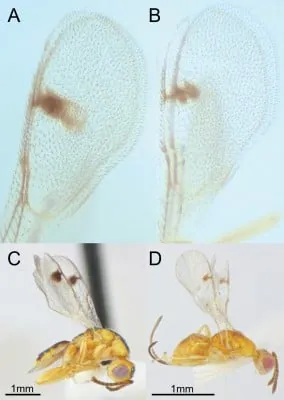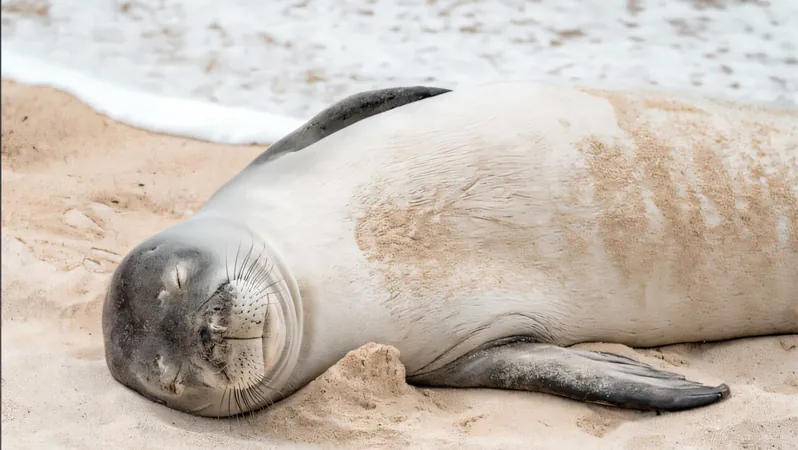
Unveiling Nature's Hidden Gems: Rare Wasp Species Discovered in the U.S.!
2025-08-25
Author: Yu
Exciting Discovery in the World of Entomology!
In a groundbreaking revelation, a dedicated research team from Binghamton University, State University of New York, has identified two new species of parasitic wasps right here in the United States! This finding shines a light on the often-overlooked world of oak gall wasps and their predators.
Nature's Tiny Architects: The Oak Gall Wasp
Measuring just 1 to 8 millimeters, these diminutive insects are responsible for creating mesmerizing, tumor-like growths on oak trees known as galls. These galls can vary dramatically in size and shape, some resembling sea urchins or even saucers, making them a hidden treasure in North America's diverse ecosystems. Binghamton University Associate Professor Kirsten Prior explains how this discovery speaks volumes about biodiversity.
Understanding the Complex Ecosystem of Wasps
North America boasts around 90 oak species and a staggering 800 varieties of oak gall wasps. Here, parasitic wasps lay their eggs inside galls, leading to the demise of the oak gall wasps. The question of how many parasitic wasp species exist captures the attention of researchers and nature enthusiasts alike.
The Research That Uncovered These Hidden Species
A recent publication in the *Journal of Hymenoptera Research* details this significant find: two species of Bootanomyia parasitic wasps introduced to North America. This exciting development is part of a larger effort funded by a National Science Foundation grant of $305,209 aimed at exploring oak gall wasp diversity across the continent.
The Quest for Knowledge: How Ecologists Study Wasps
This research focuses on understanding how gall-forming insects evade various parasitic wasps—an evolutionary arms race! Scientists will be gathering samples across North America and using genetic sequencing to uncover the secrets buried within these galls.
A Journey Across the Country
The research team, including graduate students from Binghamton University, has traveled extensively, collecting around 25 oak gall wasp species and rearing thousands of parasitic wasps, learning that over 100 different species exist. One notable discovery was identifying the European species Bootanomyia dorsalis on both coasts of North America.
An Intriguing Introduction: How Did They Get Here?
The findings indicate that B. dorsalis was potentially introduced to North America not just once, but at least twice, hinting at a fascinating and complex history of species migration. The arrival mechanism could range from introduced oak species to possibly hitchhiking on aircraft.
Potential Impacts on Native Species
While the ramifications of these newly introduced species on native ecosystems remain uncertain, earlier invasions of similar species have shown they can disrupt local insect populations. Prior stresses the importance of ongoing research to understand how these newcomers may affect indigenous oak gall wasp species.
Empowering Citizen Scientists to Make a Difference!
Enthusiastic naturalists and citizen scientists play a pivotal role in this research effort. Projects like Gall Week on iNaturalist encourage public participation in gall collection, contributing to our understanding of biodiversity. Binghamton University ecology students actively participate in these initiatives, ensuring they log valuable data during community events.
Why Biodiversity Matters!
In a world facing ecological challenges, recognizing and preserving biodiversity becomes crucial. Parasitic wasps, often the most diverse creatures on Earth, serve as essential components of ecosystems, regulating pest populations that threaten crops and forests. Understanding their roles and how new species interact with native environments can safeguard the balance of our natural world.


 Brasil (PT)
Brasil (PT)
 Canada (EN)
Canada (EN)
 Chile (ES)
Chile (ES)
 Česko (CS)
Česko (CS)
 대한민국 (KO)
대한민국 (KO)
 España (ES)
España (ES)
 France (FR)
France (FR)
 Hong Kong (EN)
Hong Kong (EN)
 Italia (IT)
Italia (IT)
 日本 (JA)
日本 (JA)
 Magyarország (HU)
Magyarország (HU)
 Norge (NO)
Norge (NO)
 Polska (PL)
Polska (PL)
 Schweiz (DE)
Schweiz (DE)
 Singapore (EN)
Singapore (EN)
 Sverige (SV)
Sverige (SV)
 Suomi (FI)
Suomi (FI)
 Türkiye (TR)
Türkiye (TR)
 الإمارات العربية المتحدة (AR)
الإمارات العربية المتحدة (AR)